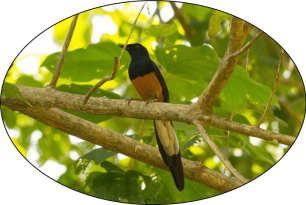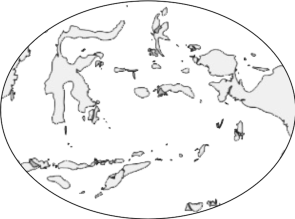About Us
Members of the Avian Evolution Lab have in common a fascination for biodiversity and its underlying evolutionary processes. With the ongoing biodiversity crisis on our planet, we are also interested in how knowledge of evolutionary processes can inform conservation.
Most of our research activities focus on the mechanisms that lead to – or sometimes act against – the build-up of biodiversity, such as genetic differentiation and introgression. Birds are our main model organism because their well-known distribution and life-history render them a suitable object for evolutionary studies. Our lab has branched out into a wide array of other animal groups, such as turtles, crocodiles, and mosquitoes. Pursuing a research project in this lab usually involves the application of a variety of laboratory approaches and contemporary computational tools based on Next-Generation Sequencing (NGS) technology. Fieldwork and bioacoustic analyses are often, but not always, an important component of our students’ work.
Some of our lab’s overarching research themes include:
 (1) Conservation Genomics: The Earth is undergoing the Sixth Extinction Crisis. Humans are directly or indirectly causing the extinction and endangerment of myriad animal and plant species. In order to mitigate or even counteract adverse anthropogenic effects on our environment, the conservation community must employ a host of strategies. Population genomics and phylogenomics are extremely valuable tools in the arsenal of conservationists. In our lab, we use contemporaneous laboratory methods based on the most recent NGS technology to obtain genome-wide DNA sequences for a wide array of analyses relevant to conservation, whether it be a population-genetic diversity survey in some of the most endangered turtles on Earth, or the assessment of genomic contribution in potential hybrids of endangered species (such as Siamese Crocodiles and Milky Storks) to aid breeding programs, or the characterization of population structure in severely fragmented forest animals across Southeast Asia to inform efforts towards restituting connectivity and gene flow corridors.
(1) Conservation Genomics: The Earth is undergoing the Sixth Extinction Crisis. Humans are directly or indirectly causing the extinction and endangerment of myriad animal and plant species. In order to mitigate or even counteract adverse anthropogenic effects on our environment, the conservation community must employ a host of strategies. Population genomics and phylogenomics are extremely valuable tools in the arsenal of conservationists. In our lab, we use contemporaneous laboratory methods based on the most recent NGS technology to obtain genome-wide DNA sequences for a wide array of analyses relevant to conservation, whether it be a population-genetic diversity survey in some of the most endangered turtles on Earth, or the assessment of genomic contribution in potential hybrids of endangered species (such as Siamese Crocodiles and Milky Storks) to aid breeding programs, or the characterization of population structure in severely fragmented forest animals across Southeast Asia to inform efforts towards restituting connectivity and gene flow corridors.
(2) Genetic introgression: Genetic introgression is increasingly recognized as a pervasive phenomenon in evolutionary processes such as speciation and in the introduction of novelty into the gene pool. One of our main study foci is to examine the mechanisms of introgression. In particular, we are interested in the spatio-temporal patterns of introgression given different geographic and ecological conditions, and in whether selection or neutral processes are the main driver of introgression. Our introgression research has produced exciting results flagging the Indonesian Archipelago as a unique laboratory of evolution, in which secondary gene flow may be more pervasive than in other regions across the planet.
(3) Complex radiations and leapfrog patterns: Advances in sequencing technology have opened up challenging new areas in evolutionary biology. Some of our projects aim at the analysis of biogeographic leapfrog patterns and complicated explosive radiations in birds that are recent and therefore challenging to trace with traditional molecular markers. Using sequence data of genomic proportions and emerging analytical techniques across a number of Asian and Australasian songbird lineages, we are disentangling the evolutionary history of such complex radiations in unprecedented detail and explore the genomic landscape of differentiation and the neutral and selectional factors that may have shaped their diversification process.
 (4) Biogeography in Wallacea: The Wallacean Region has had a major influence on our understanding of biogeography. Using his insights on animal distribution – especially birds – Alfred Russel Wallace delimited the area’s biogeographic regions along an improbable dividing line. Even so, the region’s avifauna remains virtually unexplored from a phylogenetic and population genetic perspective. This region has had a tumultuous earth-historic trajectory, involving impressive faunal turnover at localized as well as regional levels. Our aim is to use a thorough geographic sampling regime of birds coupled with modern phylogenomic methodology to illuminate regional biogeographic patterns against an earth-historic and paleo-climatic background of changing island connections. The results of our ongoing studies on across-island gene flow of various songbirds in the East Sulawesi region help provide a solid foundation for understanding how biogeographic processes shape regional turnover across Wallacea.
(4) Biogeography in Wallacea: The Wallacean Region has had a major influence on our understanding of biogeography. Using his insights on animal distribution – especially birds – Alfred Russel Wallace delimited the area’s biogeographic regions along an improbable dividing line. Even so, the region’s avifauna remains virtually unexplored from a phylogenetic and population genetic perspective. This region has had a tumultuous earth-historic trajectory, involving impressive faunal turnover at localized as well as regional levels. Our aim is to use a thorough geographic sampling regime of birds coupled with modern phylogenomic methodology to illuminate regional biogeographic patterns against an earth-historic and paleo-climatic background of changing island connections. The results of our ongoing studies on across-island gene flow of various songbirds in the East Sulawesi region help provide a solid foundation for understanding how biogeographic processes shape regional turnover across Wallacea.
